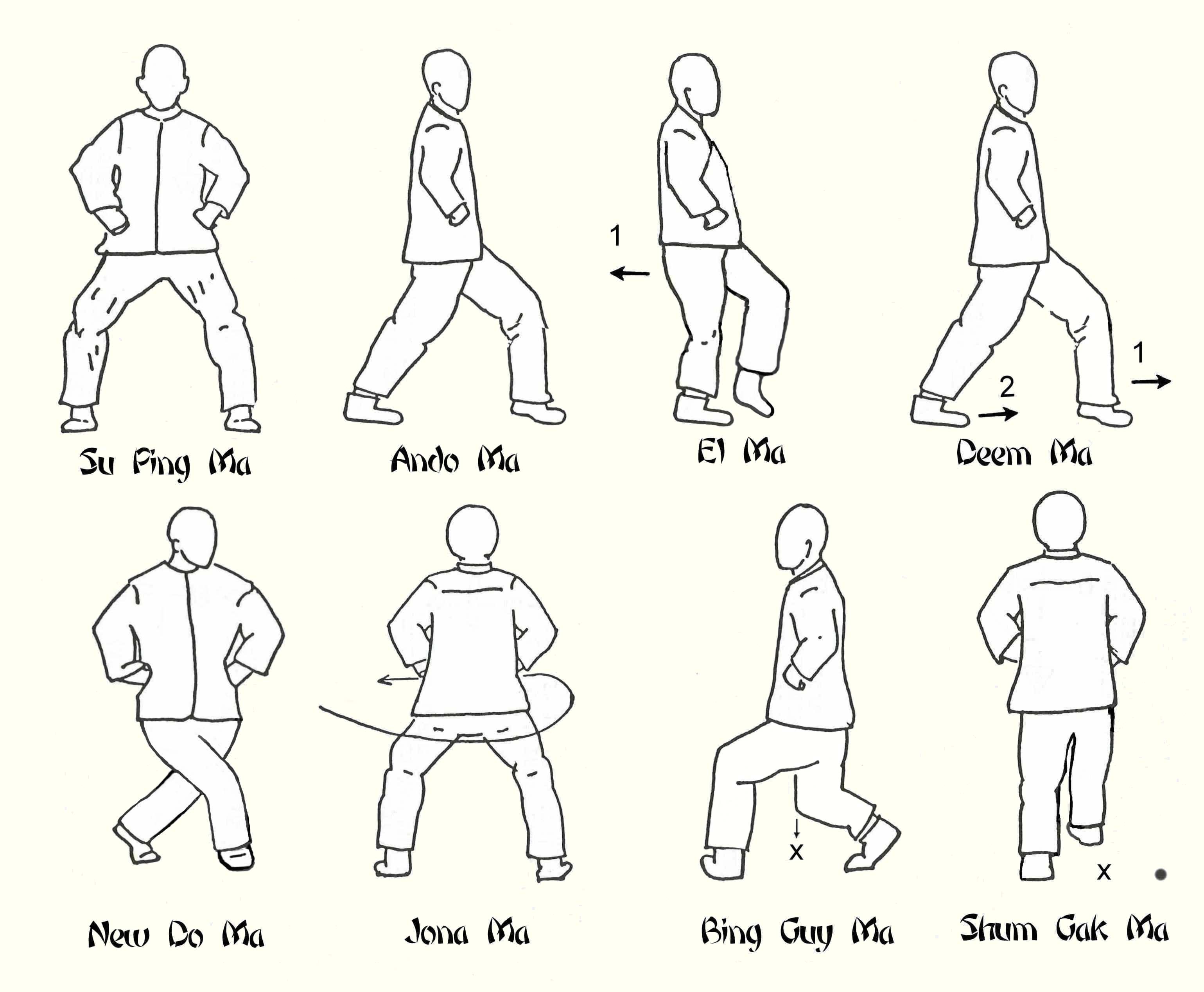|
Note: All rotating is done on
the balls of the feet. Feet do not move at the same time.
When one foot moves, the other is at rest.
During the exercise, the hip remains level and does not bob up and down.
The exercise begins from set
position, hands on hips. The heels
of the feet are touching and the feet form a "V".
1.
Su Ping Ma (Full or Center
Horse Stance)
From set position, pick up
the right foot and move it in a clockwise arc, putting it down, to your right,
at a point, just past your right shoulder. Next,
move the left foot in a counter clockwise arc, placing it at a point just past
your left shoulder. The toes of the
feet remain pointed at a 30 degree angle to each side.
Proper horse distance is 28 - 30 inches.
2.
Ando Ma (Half Horse Stance)
Turn the hips and right foot
counter clockwise, to your left, until the right foot points about 35 degrees
right of the line of your heels. During the execution of this movement, the
left foot for the most part, remains stationary but is allowed to adjust
slightly in a counter -clockwise direction. The left foot’s final position is
also about 35 degrees with respect to the line of the heels, or parallel to the
right foot.
3.
El Ma (Kick Stance)
Move the hips, back, over the
right foot, allowing the right leg to bend at the knee. Draw your left foot
back, putting the left toes down very slightly ahead of the right toes. All
weight is on the rear leg.
4.
Deem Ma (Slide Stance)
From the kick
stance, move the left foot to a point about a horse and one-half ahead of the
right foot. The left foot travels in a slight clockwise arc, and the left toes
will be pointing about 35 degrees to the right. Now, pull the back leg up till
the legs are, again, one horse distance apart. Be sure that the right foot points
about 20 degrees right
of the line of your heels.
5.
New Do Ma (Cross Stance)
Swing the right foot in a
counter clockwise arc placing the right foot, on line, ahead of the left foot.
The right toes point about 60 degree to the right. As the right foot makes
contact, the left knee bends, moves forward and comes to rest, touching the top
of the right calf. The left big toe points slightly right of the right big toe.
6.
Jona Ma
(Turning Horse)
Rotate the upper body 90
degrees, counter clockwise, and allow the left foot to rotate on its ball, at
the same time. The hips and foot turn until the left foot is nearly parallel to
the right foot. Like the plie (plee-ay) position in ballet. As you are doing
this, do not allow the right foot to move. As you set the weight on the left
foot, now, begin to rotate the right foot, counter clockwise on the ball, about
105 degrees, until a Su Ping Ma is formed.
7.
Bing Guy Ma
(Kneeling Stance)
Continue twisting counter
clockwise turning the right knee down down. The left foot does not
move! The right foot rotates until
the right foot points about 20 degrees right
of the line of your heels. At the same time bend and drop the knee half way down
toward a point between the legs.
8.
Shum Gak Ma
(Triangle Stance)
Draw the
right foot to the point, between the legs, that the right knee was hovering
above. This is located half way between the two feet. Then step straight.
The horse (line of the heels) will be angled about 45 degrees to the right.
|

